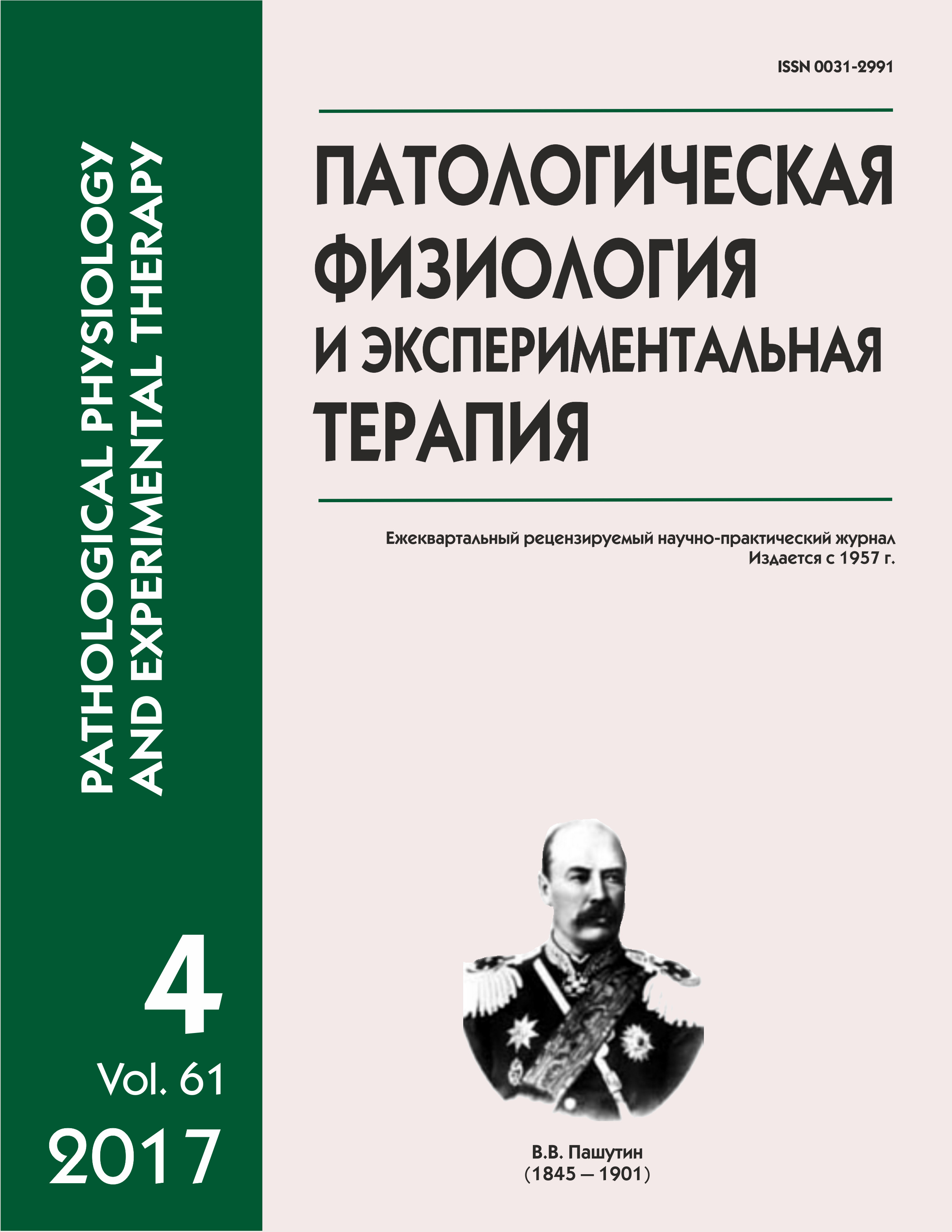Testosterone-dependent changes in neurons of hypothalamic arcuate nucleus and reversibility of these changes by modeled male hypogonadism
DOI:
https://doi.org/10.25557/IGPP.2017.4.8519Keywords:
medial arcuate nucleus; hypogonadism; androgen receptors; neurons; reactive changes.Abstract
Background. Importance of testosterone deficiency for structural homeostasis of the neurons regulating production of gonadotropin-releasing hormone (GnRH) and synthesizing this hormone is insufficiently understood. Aim. To determine reactive changes, quantity of androgens receptors (AR), and features of their distribution in neurons of hypothalamic medial arcuate nucleus (MAN) in experimental hypogonadism and reversibility of these changes by restorative therapy with testosterone. Methods. Hypogonadism was modeled in 16 Wistar rats by removing one gonad on postnatal days 2-3, and histological sections of caudal MAN were examined in young, 4-month old animals with and without a replacement therapy. The control group consisted of 8 age-matched intact males. Cell reactive changes, areas of slightly changed neuron bodies (Nissl staining of sections), and the number and proportion of nerve cell bodies differing in the degree of AR expression were determined in the middle left-sided part of MAN, on an area of 0.01 mm2. Results. MAN neurons contained a large quantity of AR distributed in different parts of the neuron body. In hypogonadism, AR redistributed and their expression (quantity) decreased. Condensation of AR in the region of nucleo- and plasmolemma and formation of conglomerates in the nucleus and cytoplasm were characteristic of neurons with moderate expression. In the regions of cytoplasm and plasma membrane, the receptors were absent in cells with low and very low expression. The reduced AR expression in hypogonadism was associated with a decreased neuron body area and death of a part of neurons. Conclusions. The identified degenerative changes in the testosterone-dependent neuronal MAN that synthesize GnRH or peptides affecting the GnRH production may decrease the release of GnRH, cause a secondary decrease in the androgen synthesis, and mediate morphological and functional manifestations of GnRH secondary deficit. The replacement therapy partially compensated for degenerative changes in neurons and restored the intensity of AR expression, however, it did not influence the process of nerve cell death.Downloads
Published
2015-04-08
Issue
Section
Original research
How to Cite
[1]
2015. Testosterone-dependent changes in neurons of hypothalamic arcuate nucleus and reversibility of these changes by modeled male hypogonadism. Patologicheskaya Fiziologiya i Eksperimental’naya Terapiya (Pathological physiology and experimental therapy). 61, 4 (Apr. 2015), 21–30. DOI:https://doi.org/10.25557/IGPP.2017.4.8519.






